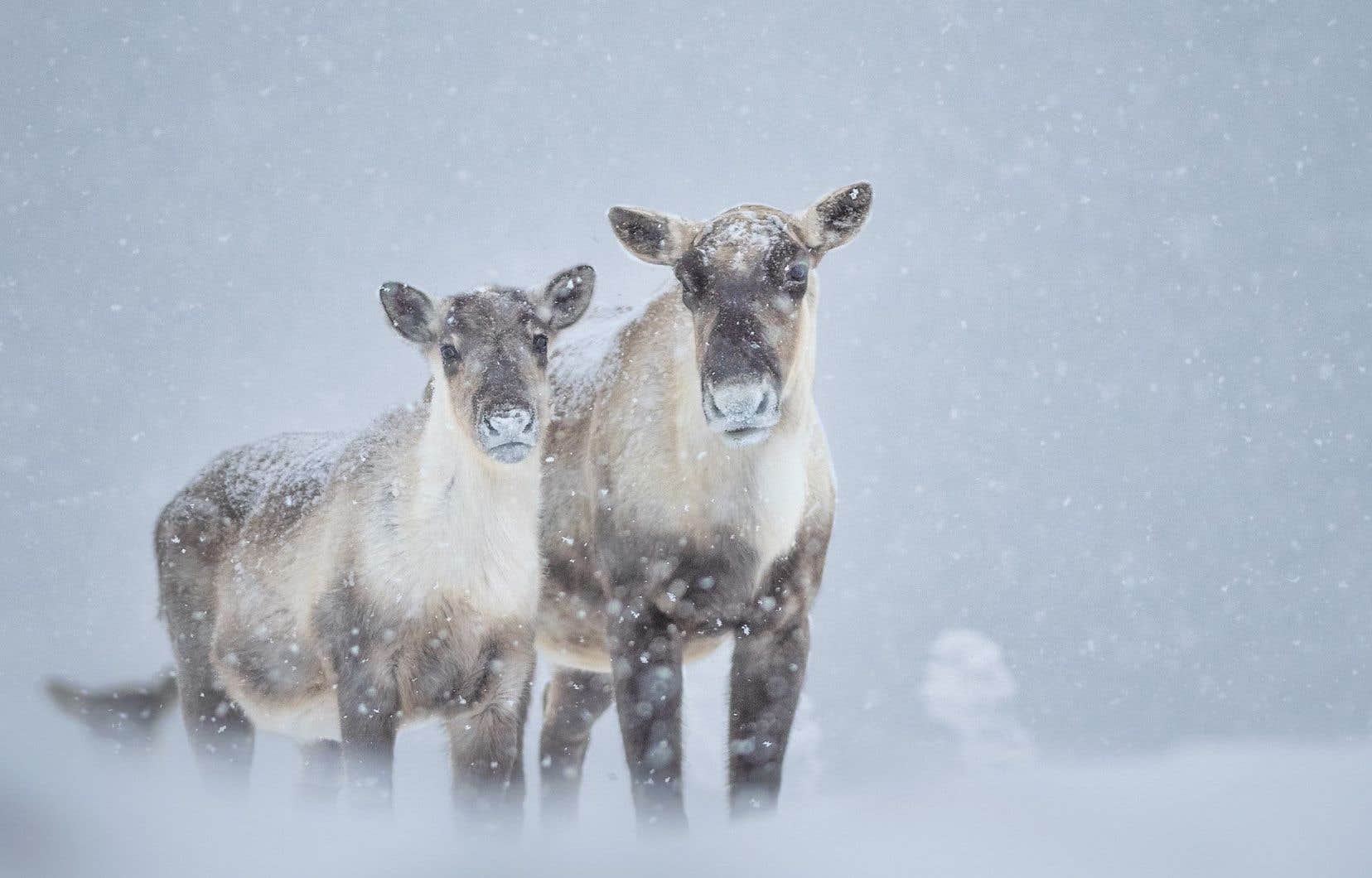This text is taken from Courrier de la planete. Click here to subscribe.
Despite a first failure last year, the Quebec Ministry of the Environment has just carried out a new operation to capture female caribou from the Gaspésie, reports The duty. The operation aims to protect possible fawns during the first months of their life, before their release. Saving this livestock on the verge of extinction would, however, require the addition of protected territories, but it is unknown whether the Legault government intends to move forward with this project.
The Ministry of the Environment, the Fight against Climate Change, Wildlife and Parks confirmed to Duty over the last few days that the operation had indeed taken place. However, it was not possible to obtain details, the ministry simply indicating that “the results will be revealed soon”. The latter nevertheless confirmed that “the capture methods were the same as those of last year”.
In 2023, as part of a complex project attempted to avoid the complete disappearance of the Gaspésie mountain caribou herd, six females were captured by helicopter using a net thrower operated by an expert from this type of operation, then placed in enclosures. The objective was that the fawns could be born in captivity in order to protect them during the first months of their life, during which they are very vulnerable to predation. But in the end, the results were zero.
Rapid decline
The decision was nevertheless made to attempt such an operation again this year, in the context where the caribou population of Gaspésie, which is the last to survive south of the St. Lawrence, is barely around thirty animals. . One of the last females, who was wearing a clearly visible radio collar, was even killed by poachers last fall.
In 2019, the herd, already in sharp decline, was estimated at 40 animals, while inventories published based on data from 2017 reported the presence of around 75 animals. During the first censuses, in the 1950s, their number was estimated between 700 and 1500. When inventories became systematic, in the 1980s, the population did not exceed 250 individuals. This isolated herd is therefore in a critical situation.
That of Val-d’Or, which has barely nine animals, and that of Charlevoix, which has 30 caribou, have both been permanently placed in enclosures. In both cases, it seems impossible to consider releasing them without moving forward with measures to protect their habitats.
In the Val-d’Or region, it has been severely disrupted by the forestry industry and mining projects. In the case of Charlevoix, territorial development has also pushed caribou towards extinction and a major wind project risks encroaching on forest areas which could constitute their last refuge.
Habitat to protect
At the stage of the two herds currently in captivity, that of the Gaspésie would absolutely need measures to protect its habitat to avoid extinction in the very short term, according to experts on the species.
Or, currently, as soon as we leave the territory of the Gaspésie National Park, where caribou concentrate for a good part of the year, we find ourselves in areas that have undergone logging. These cuts represent the rejuvenation of the forest, and therefore the arrival of other species of deer, which attract predators, while logging roads maintain their movement towards caribou.
As part of the 2022 update of the federal “recovery program” for the Gaspésie caribou, it is also emphasized that “Gaspésie caribou require vast expanses of interconnected habitat that are relatively undisturbed.” This allows them, according to scientists, to “insulate themselves from predators”, but also to “modify the use they make of the habitat in response to natural or anthropogenic disturbances of the habitat as well as human activities , and have access to their favorite food sources.”
In this context, federal experts have defined, in this program, the “range” of the caribou, but also the “heart” of it. There is also a designation of “habitat” under Quebec legislation. But regardless of the territory that we take into consideration, the protection of the natural environments necessary to ensure the survival and recovery of this population would involve increasing the surface area of protected areas around the Gaspésie National Park.
“Strategy” to come
In 2020, the Legault government, however, ruled out a protected area project, called “Vallières de Saint-Réal”, which would have made it possible to protect a territory suitable for caribou and located to the south of the Gaspésie national park. And the recreational tourism industry is demanding access to more territory, which could come into conflict with caribou habitat.
For the moment, it is unknown whether the provincial “strategy” for the caribou could provide additional protection measures for the Gaspésie herd. It is not possible to know, at present, when this strategy will be revealed. It has been postponed several times since 2019.
The director of the Society for Nature and Parks of Quebec, Alain Branchaud, believes that the Legault government must move forward quickly, as also recommended by the federal government. “We are currently tempted to analyze all the options, from a legal point of view,” warns Mr. Branchaud. The latter adds that in addition to reducing habitat disturbance, it could be desirable to consider the introduction of additional caribou in Gaspésie, in order to allow the herd to replenish itself.
This text is part of Courrier de la planete.
